Heads up, Green Investors: Climate-Focused Mutual Funds Have Stakes in Oil
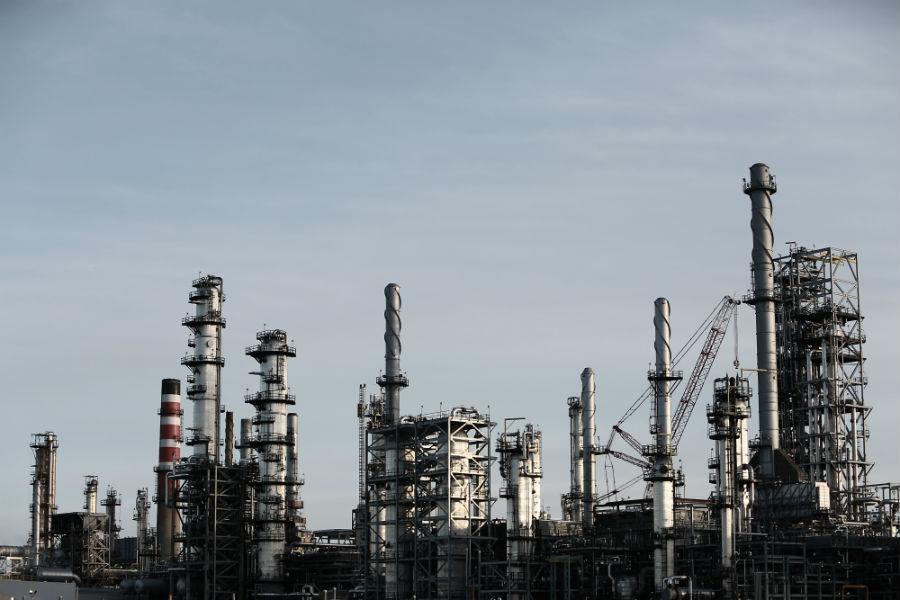

By Anum Yoon
With all eyes on the COP21 World Climate Summit in Paris this month, the world watched as global leaders met to try to affect lasting change and create a binding agreement for reducing carbon emissions.
French President Francois Hollande called the event “the last chance to save the world,” and though his words are dramatic, they may not be far from the truth. Scientists are concerned about rapid temperature rise on the planet and warn that the consequences of another 2-degree rise could be disastrous.
Economic leverage
Apart from relying on governmental institutions to act, one way in which concerned citizens and institutions around the world are seeking to slow climate change is by investing in green energy businesses and companies that do not pollute the environment or deal in damaging fossil fuels. For example, universities are divesting their endowments of companies that sell fossil fuels, and conscientious investors are seeking to retool their own portfolios to seek out green investments.
The boom in green investing comes with a major caveat, though: Several of the most popular mutual funds designed to appeal to eco-conscious investors include holdings in major oil and gas companies, according to data from Reuters.
Top-performing climate-conscious mutual funds
Of the 20 largest mutual funds designed to address climate change, nine had positive rates of return for 2015, as of November. The top five performers earned between a 9.1 and 15.8 percent return and did not include any investments in fossil fuels. These top funds are, in order of performance:
- AEGON Climate Change Reszveny ba: 15.8 percent
- Schroder ISF Glo Climate Change Equity A Acc: 13.7 percent
- Nordea 1 – Climate and Environment Equity BP EUR: 13.2 percent
- Jupiter JGF Global Ecology Growth L EUR Acc: 10.8 percent
- RobecoSAM Global Small Cap Equities EUR B: 9.1 percent
Investors in these top mutual funds are getting what they paid for and proving that environmentally-minded investments can also earn impressive returns.
Climate-focused mutual funds with oil and gas investments
Of the same 20 mutual funds, six were found to contain investments in oil and gas companies. Of these six, only two had positive returns so far in 2015, while the other four experienced net losses as of November. The mutual funds with fossil fuel investments include:
- Mirova Globael Transition Energy Equity Fund RAE: 8.2 percent
- Climate Assets GBP R Acc: 0.3 percent
- Jih Sun Anti-Global Warming Fund: -0.5 percent
- Shinko Global Warming Prevention Equity Fund: -2.2 percent
- Nomura Global Climate Change Fund: -3.5 percent
- HSBC GIF Global Equity Climate Change AC USD: -4.4 percent
These funds held anywhere from 1.27 percent to 5.79 percent of their investments in fossil fuels.
Check the prospectus to understand the fund’s goals
A careful reading of any mutual fund’s prospectus will reveal all of its investments, and this is especially important for the rising class of conscientious investors carefully considering the ethical pros and cons of their investments. If the investors' goals are that zero of their dollars go to companies that produce oil and gas, they must look beyond the potentially misleading name of the fund and read the prospectus in full. This due diligence is important, as the names of mutual funds are not regulated.
It’s also worth considering the overall goal of the fund. For example, the HSBC fund listed above states in its prospectus that it strives to invest in and support “companies that aim to be the market leaders in their respective sectors at managing their businesses in the face of climate change.” Given that goal, fund managers feel comfortable choosing to invest in oil and gas companies that are taking steps to address climate change in their practices, perhaps by reducing waste and increasing efficiency in other areas of their supply chain.
Market leaders might be oil and gas companies doing more than their counterparts for the environment, though it’s difficult to tell from the prospectus alone how high the bar is set for leadership in this area. In a sector rife with pitfalls for investors, some eco-conscious investors may decide that encouraging companies to try harder is a worthy goal for their money.
The bottom line
As always, individual investors should practice due diligence and thoroughly research mutual funds before buying shares. Knowing how well a given fund performs in both its monetary returns and its ethical makeup is key to getting the most out of any portfolio.
In the end, it’s up to each person to decide for themselves whether a better strategy is to avoid putting money into fossil fuels entirely, or to reward oil and gas companies who are making a good-faith effort at cleaning up their acts. Regardless of which philosophical take is preferred, conscientious investors are changing the face of the market in ways that will continue to resonate in the future.
Image Credit: Life of Pix
Anum Yoon is a writer who is passionate about personal finance and sustainability. She often looks for ways she can incorporate money management with environmental awareness. You can read her updates on Current on Currency.
Science is Winning: 58 Percent of Republicans Support Climate Action


A majority of Republicans support climate action. Unfortunately, the Republican presidential candidates haven't gotten the memo.
One of the most striking things at the Paris UNFCC COP21 Climate Change Conference, which I and several other TriplePundit team members attended earlier this month, was the complete lack of climate denying. Every delegate, NGO representative, business leader or media member understood that climate change was a real, serious and immediate threat to the global economy.
It was a stark contrast to what you hear sometimes in America, where the political discourse on climate and the environment is far more divided. Turn on the nightly news and when climate change is mentioned, it is likely that there is a denier ready to speak. But it turns out that years of efforts by scientists, NGOs and, yes, businesses to raise awareness of the threat of climate change is making a difference, even among Republicans. That is according to a recent poll from Reuters/Ipsos, which found that more than half of all Republicans supported President Barack Obama's climate pledges in Paris.
What's more, the polls found that 58 percent of Republicans are willing to take individual steps to help the environment.
The poll's findings come in stark contrast to the opposition to climate action from Republican hopefuls in the race for the party's presidential nomination. One candidate, Texas Sen. Ted Cruz, promised this week that he would pull out of the Paris Agreement if he was to win the presidency.
It's quite sad. If you listen to the Republican presidential debates, whenever climate comes up (and it's not often), the candidates jump over each other to be the most backward-facing. This isn't a surprise for a party whose lead member of the Senate Environment and Public Works Committee once brought a snowball into the Senate as proof that climate change was not real.
Thankfully, these Republicans had no voice in Paris, and thus far President Obama is paying them no heed. If this poll is right, then it's just a matter of time before Republican leaders begin to represent their constituency. If not, expect a tough time for the party this coming November, because campaigning against reality is never a winning recipe.
Image credit: Iowapolitics.com via Flickr
How One Sustainability Pro Broke Out of Her Silo
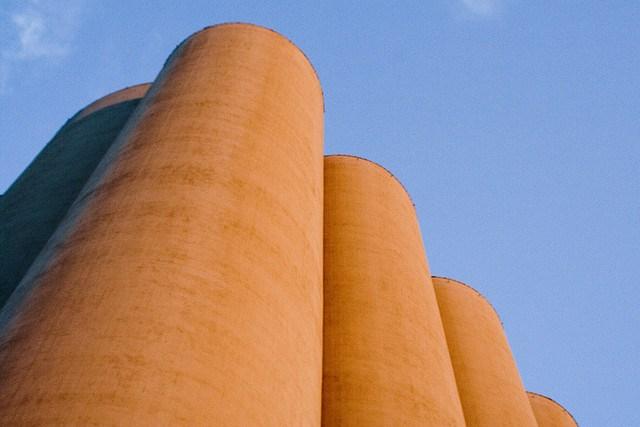

Editor's Note: To learn more about Bill's thoughts on breaking through silos at your company, check out this post.
By Bill Hatton
Sandy Nessing, managing director of sustainability and EHS strategy and design for American Electric Power, explains the keys to breaking out of silos: “Communication. Appreciation. Listening. You need to have all three to break down silos. You need to build trust with people, that they know you have their back. You have to listen to what they are saying and what they are not saying as well. You need to learn about their job.”
American Electric Power (AEP) is building numerous transmission lines throughout the country, and a big challenge is siting, i.e., getting easements for rights of way.
“You have to work with landowners, who don’t like it when you tear down trees and rip up the land; even though you restore it after, it’s still a huge issue in dealing with communities.”
The groups involved:
- Senior management has 4- to 6-percent growth goals, and more than half its capital goes to the transmission business. So, building transmission lines is a high priority.
- Forestry, which manages the rights of way, is primarily concerned about reliability. Trees knock out power lines; forestry doesn’t want that to happen.
- Environmental services, which is worried about permit compliance and conservation, as well as restoring the land afterward. Part of their job is to keep regulators and community members happy.
- Transmission outreach and siting teams. Their job is to build the lines: “Their job is to put that steel in the ground and get it done,” says Nessing.
- Community members and landowners, who prefer as little disruption as possible.
“Forestry is very concerned about reliability,” Nessing says. “Because if a tree comes down and hits a transmission line, it could mean fines of as much as $1 million a day, depending on what kind of line it is. So it’s a huge risk to the company. If we are not being good stewards of the environment, there are reputational risks as well as financial risks. The foresters were not interested in what the environmental team had to say about ‘We can restore the land, one that attracts habitat, we can put the land back better than what it was.’ Forestry was just focused on reliability of those lines. They used to joke, ‘blue sky, you take it right down, you scorch it, so there’s absolutely no risk of a tree growing into a line.’ We’ve gotten away from that, thankfully.”
Forestry was where a key obstacle was in breaking free of silos, and thus creating a more environmentally friend solution that would keep the other groups happy.
“Forestry was where the obstacle was,” Nessing says. “If I could get through to forestry, then I could everybody to the table and I could get something done.”
Nessing called up the head of the forestry to ask what the issues were. “I called him up one day and said, ‘I have this idea about working with the Wildlife Habitat Council,’ and he just about had a heart attack first. I spent an hour with him on the phone.”
She then visited the head of forestry to get a walkthrough of the processes and concerns. She learned about forestry, business returns and budget issues, and even went up in a helicopter one afternoon while they patrolled transmission lines. Key: Listen and get inside the heads of that business unit.
“It was really beneficial because I earned his trust--he knew that I wasn’t going to throw something at him that would put reliability at risk,” Nessing says. “He was then willing to come and talk to the environmental services group and I worked with them one on one as well and helped them understand where [forestry] was coming from, and then brought in the transmission team. As a result, we did work with Wildlife Habitat Council and we developed a conservation toolkit the foresters and the outreach teams can use when they are siting transmission lines. So the teams came together for that project.”
Nessing spoke at a Nov. 5 conference organized by Skytop Strategies, a sustainability events firm headquartered in New Paltz, NY.
Image credit: Flickr/Eirik Refsdal
Bill Hatton is a veteran business-to-business journalist who has written on EHS, compliance, legal and management topics for 25 years. He can be reached at billhatton at mountainvieweditor dot com.
The LA Methane Leak: 2015's Epic Environmental Injustice
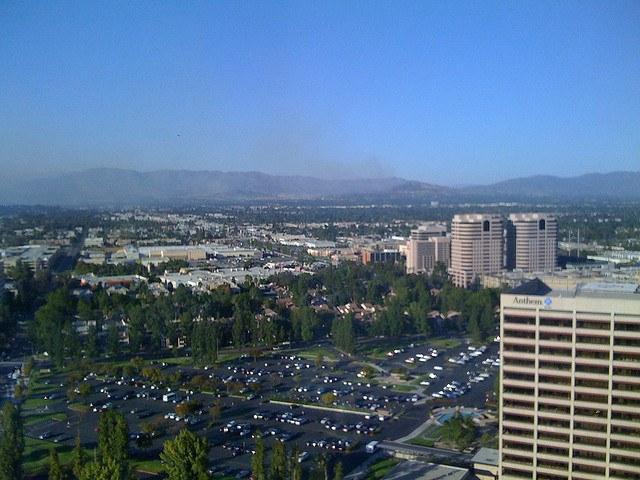

Environmental injustice can occur anywhere, and this Christmas, a gated community of 30,000 residents in the scenic hills of Los Angeles proved this point.
The community of Porter Ranch, known for its comfortable upscale suburban setting of culs-de-sac and family-friendly neighborhoods, has been besieged by the effects of a natural gas leak from a Southern California Gas Co. (SoCalGas) facility in Aliso Canyon, just outside the development. Thousands of residents have been complaining of headaches, nosebleeds, vomiting and nausea from the atmospheric leak, which is caused by a ruptured pipe more than 7,000 feet below the earth's surface. The impact on the community has been massive enough that it has garnered the attention of environmental activist Erin Brockovich (best known for a landmark environmental justice case against Pacific Gas & Electric in the 1990s).
"At this rate," says Brockovich, "in just one month, the leak will have accounted for one-quarter of the total estimated methane emissions in the state of California."
So much for new clean air strategies.
Last week, the Los Angeles city attorney's office negotiated an agreement with the company to step up its response to residents' demands for relocation and aid. Under the agreement, SoCalGas has 72 hours to find housing for any families that request relocation. It must also provide shelter for pets if necessary and provide security patrols while the houses are uninhabited.
The company initially contested a court or order requiring relocation, on the grounds that it was already offering that assurance. But residents told Brockovich they were put on a priority list and had to wait weeks to get a response.
The company is also being sued by residents, who say they were sickened by the gas emissions and were forced to pay for their own relocation. The actual dollar amount of the suit won't be tallied until the leak is stopped and the families are able to move back to their homes. At this point, SoCalGas says it may not have the leak fixed before March 2016.
And the gas company's troubles don't stop there. The city is investigating the matter and plans to depose company officials over the scandal, which has also led the local school board to close two schools for safety reasons. With as much as 110,000 pounds (50,000 kilograms) of gas being emitted per hour, the Federal Aviation Administration has also imposed a no-fly zone over the area to reduce the chance of pilots and passengers becoming affected by the plume.
Of course, the question that seems salient at this point is not just why it has taken two months for SoCalGas, the city attorney's office and CARB to prioritize this crisis, but why impact from environmental problems seem to be growing in size as well.
On the other side of the country, the city of Flint, Michigan, and the ongoing investigations into the lead poisoning of its residents offer another example of an environmental crisis in the making. Like the impact of SoCalGas' ruptured pipe leak, the number of victims in Flint is now at crisis proportions, with thousands of children being diagnosed with lead poisoning (an often irreversible condition). It took more than a year of health reports from doctors, along with an election promise and the concerted effort of one incoming mayor, to declare a state of emergency.
Fortunately, SoCalGas is attempting to address the leak quickly. But the size and location, the company says, may lead to months of effort (and months more of methane emissions), rendering much of the sedate community that is best known, ironically, for its iconic role as the location for Steven Spielberg's breakout movie "ET" as an environmental no-man's land for upscale suburbans who relish the cleaner air and quieter life of Los Angeles living.
https://youtu.be/7KB-9UBCJUY
Image credits: 1) Earthworks; 2) Mike Spasoff
Can Sustainability Pros Break Out of These Six Silos?
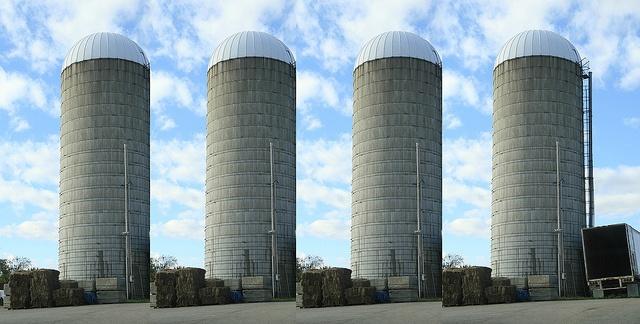

By Bill Hatton
Silos occur naturally in organizations, and companies struggle to get information out of a silo and into a broader organization. A lack of information on sourcing, for example, can cause a company to wake up one morning and find out a supplier has used conflict minerals or child labor. It’s not intentional, but the information was hidden from decision-makers’ views.
One of the biggest reasons for the corporate social responsibility (CSR)/sustainability movement was to open up silos and collect data across entire organizations and supply chains. It was step one: Let’s just find out what we are doing. Then this information is compiled in corporate responsibility reports, so all stakeholders can learn what is happening across the organization.
Lesson learned
As the sustainability and CSR movements progress, one lesson people are learning is that even these CSR reports (and the people who create them) can find themselves in a silo. Investors, for example, want financial reports. The CSR report can easily be seen as “nice to have” instead of “need to read” — even if stakeholders in fact really need to read the CSR report to get a full assessment of the material risks a company faces.
Sandy Nessing, managing director of sustainability and EHS strategy and design for American Electric Power, offers her company as an example: “The investor relations team said that the analysts and investors were grabbing the sustainability report for their disclosure on environmental performance and for the climate and policy positions.” That’s why American Electric Power has gone to an “integrated” report — combining the sustainability/CSR reporting and financial reporting in a single report.
Nessing spoke on a panel at a Nov. 5 symposium, entitled “Integrated Thinking: Drivers and Evolving Best Practices,” organized by sustainability event-programming firm Skytop Strategies and hosted at the Edelman public relations company’s office in lower Manhattan.
“We have been doing an integrated report for six years now,” Nessing said. “We’re entering our tenth year of reporting overall. We call it a corporate accountability report — it made a lot of sense for us to integrate both our financials and our non-financials.”
Six silos
What causes silos? “The term silo has been used for more than 30 years,” said Susanne Katus, vice president of business development for sustainability data software-as-a-service provider eRevalue of London. Katus hosted a panel that offered six answers:
- Functional. This is the classic definition of a silo. People are busy with their own tasks and don’t know what others are doing. Finance and marketing are busy with their own priorities. Information-sharing is limited across the functions.
- Groupthink. People get locked into one mindset – work teams don’t know what they don’t know; there are unknown unknowns; there are potential allies available, but no one knows they are out there and no one asks. McDonald’s, for example, didn’t know it had allies when it began to look at sourcing some of its products in a more sustainable way, said co-panelist James Reeves, Vice President, Business & Social Purpose, Edelman.
- Temporal. Executives think in terms of quarters. The city of Chicago, for example, has a 50-year sustainability plan. The need for immediate results can place medium- and long-term plans outside the silo, until immediate priorities for financial performance are met.
- Problem/solution. Companies think some problems are so big that one company can’t take it on, e.g., climate change. The idea that you can’t change it, that it’s too big, and thus remains outside of your locus of control, can became a problem/solution silo as you naturally gravitate toward problems you can solve. Again, this misses a potential opportunity to find allies—for climate change, that means a broad range of allies—to address the problem.
- Political. “It’s not Republicans versus Democrats, but about how you perceive the role of corporation in society,” explains Reeves. “I’ve seen a spectrum of people in companies – people who are in opposition to the spirit of sustainability, people who are toned down a bit and sort of indifferent of the role of sustainability in business, and then people who are completely unaware. When I was at Office Max, there was a culture gap, especially in the ‘aware’ category. At Office Max, the first CSR report helped break out of it.”
- Us-versus-them mindset. This is a tendency toward stereotyping the opposition. We are over here in sustainability and over there are the business units. This silo includes seeing people (and potential allies) as opposition. Reeves offer one solution exemplified during stakeholder dialogue with McDonald’s. “They brought in the stakeholders to react to the sustainability strategy one year prior to it being launched publicly. And that served to acculturate executives to a broader view, but also changed the way external stakeholders were viewed.”
Take home: CSR and sustainability professionals need to be on the lookout for the specific type of silos, whether they are in one themselves, or if they see others cut off from one another. Once you can see it, you can address it.
Image credit: Flickr/Doc Searls
Bill Hatton is a veteran business writer and the former editor-in-chief of Corporate Responsibility Magazine. He has covered management, legal, compliance and EHS topics for more than 25 years. He can be reached at billhatton at mountainvieweditor dot com.
Google and Ford to Partner on Driverless Cars
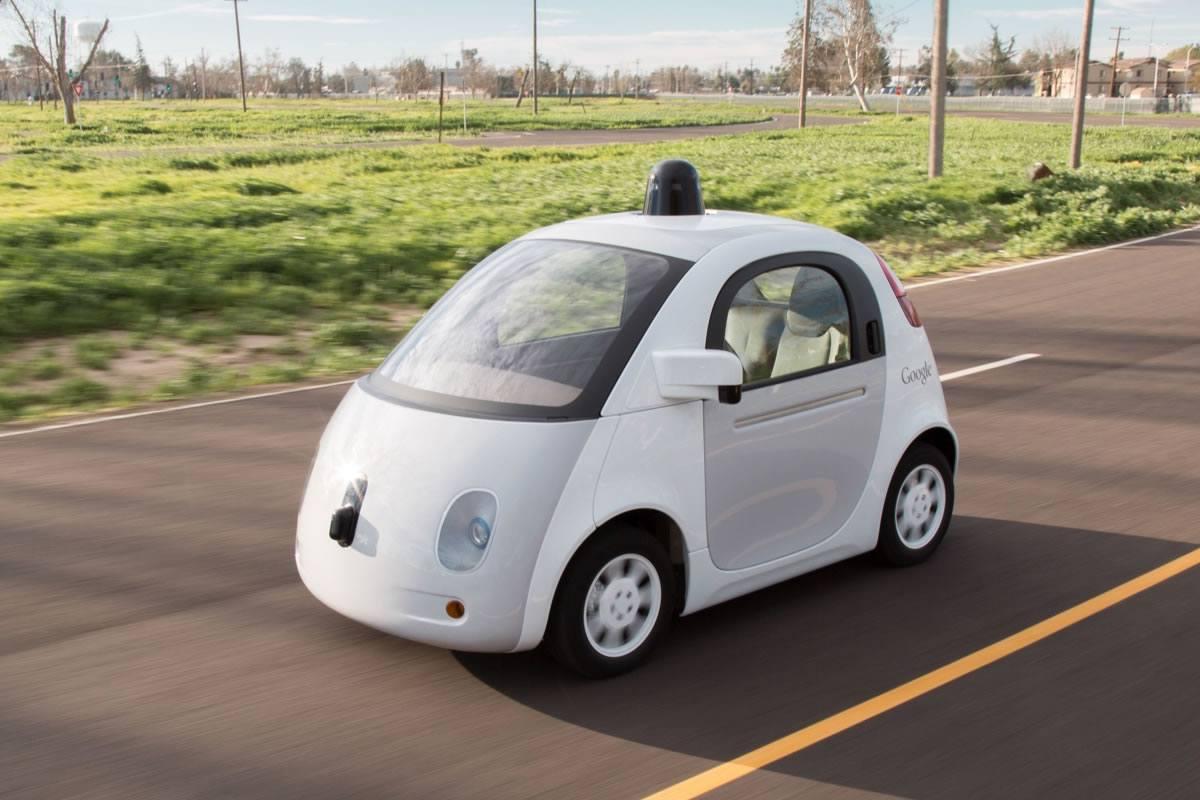

Whether or not driverless cars become the future — and some describe the idea as “pure science fiction” — the concept is catching on with both the automakers and the general public. Companies from Mercedes to Ford Motor Co. are installing driverless features into their cars, with several automakers promising to deliver driverless cars within a decade. Indeed, such a development is a huge shift to the 100+-year-old idea of car ownership: namely, independence and flexibility to go where you want, when you want. Nevertheless, driverless car technology could help reduce the scourge of the estimated yearly 1.2 million deaths blamed on automobile accidents. The evidence also suggests driverless technology could have long-term environmental benefits.
Google is behind much of the hype surrounding driverless cars. The Internet search giant claims its engineers have driven over 1 million miles testing this technology. Toyota Priuses, Lexus SUVs and Google’s VW bug-like prototype have hit the streets in Silicon Valley and Austin, Texas.
Detroit is certainly not going to be left out of the slow but steady trend toward driverless cars. According to Yahoo Autos, Google and Ford are close to creating a joint venture to develop and manufacture cars that will use Google’s driverless technology. The collaboration will reportedly be announced at the annual Consumer Electronics Show next month in Las Vegas.
Ford has already been visible on the driverless car bandwagon for several years. Two years ago, the automaker revealed a driverless Fusion hybrid in partnership with the University of Michigan and State Farm. That car aims to function as a research platform by which engineers could study the legal, regulatory, technological and societal issues that will confront a future with driverless cars on the road. And this fall, Ford started testing a driverless car at Mcity, the University of Michigan’s test center for driverless cars and related automated transportation systems. Meanwhile the company has been working with Silicon Valley firms as its driverless car R&D advanced to what it describes as an “advanced engineering phase.”
Many consumers are still jittery at the thought of driverless cars, but in fairness this technology is still in its infancy. Companies have been more focused on the competitive race to release such an automobile by the mid-2020s instead of educating potential customers on driverless cars’ potential benefits.
In a sign that Google considers driverless cars more of a serious business venture than a publicity stunt, Bloomberg reported earlier this year that the driverless cars business unit will become part of Google’s Alphabet spin-off company. Ford and Google will surely have plenty of competition coming from all directions: Uber has clearly expressed its desire to replace its drivers with automated technology in the near future, and its test cars have been seen driving all over Pittsburgh.
A future of less road-rage and reduced angst while merging onto freeway traffic may very well occur sooner than many of us think.
Image credit: Google
What Environmentally-Friendly Drinking Looks Like


By Jessica Oaks
You've no doubt heard the term carbon footprint before. Though such a phrase may cause you to roll your eyes, it's an indisputable fact that manufactured products leave an impact on the environment – some more so than others. Thankfully, you can do your part to help offset this impact.
With global warming and climate change becoming growing concerns, it perhaps isn't enough to drink "responsibly” in the year 2016 and beyond. We may, as a society, be obligated to drink in an environmentally-friendly way as well.
What does that mean, exactly? Well, on the bright side, it can mean having your cake and eating it, too, if you go about it the right way. Purchase drinks only from companies that use environmentally-conscious production processes, and you can enjoy an alcoholic beverage on occasion and not feel guilty about the impact you're having on the world around you.
Again, if you approach things the right way.
Where does your alcohol come from?
Even a product as simple as water can have a huge impact on the environment (so consider how harmful, say, batteries are). This is plainly evident in Southern California, which is experiencing one of its worst droughts in memory. Regardless of the root causes, the effects of the drought are only made worse by the massive water-consumption requirements of the area; with more than 20 million people, Southern California has a population roughly equal to that of Australia. That is a massive number of people in a relatively small area, and the situation isn't helped by the fact that the area typically experiences little rainfall. Perhaps it was inevitable then that a drought of this magnitude would impact the area and get people thinking about water conservation and climate change.
It's important to note, however, that water is used for far more than bottled water. When it comes to packaged beverages, obvious uses are soft drinks, energy drinks and bottled coffees – but there are less obvious uses, too. With alcohol production, there's an extra, often unrecognized side effect, and that is for every liter or gallon of alcohol that you see bottled in the grocery store, there may be 5 or 10 gallons of water that went into its production – water that goes unused or becomes unfit for use. In an area like Southern California, this can be truly devastating, but ultimately, water pollution and water waste are harmful no matter where they occur. And then, of course, there are the related concerns stemming from the transportation of these goods around the world.
With any product, there are the environmental concerns stemming from its production, and those stemming from its transportation. Think of it this way: Every time you enjoy a bottle of Evian or Fiji Water in your office break room, that bottle of water had to arrive to your vending machine from its country of origin – and that required airplanes, boats, trucks and trains, all of which burned tremendous amounts of fossil fuels to get to you. If that water came from France or Fiji, that's a lot of fuel. That, in a nutshell, is what a product's carbon footprint is. The globalization of consumer products means that simply by drinking a bottle of water, you could be contributing to climate change through the production of CO2 gases. When you add in further production steps, such as those necessary to make, say, beer or liquor, the impact only grows. Of course, consumer products aren't going away, so what's the solution?
Thankfully, some companies are starting to take action to help mitigate their impact on the environment. And you can do your part, too.
The smaller the impact, the “friendlier” the drink
More and more liquor producers are starting to realize that their products have an impact on the world. And to help minimize this impact, these producers are starting to act.
Captain Morgan makes its drinks responsibly, thanks to its parent company's actions. Diageo, the owner of Captain Morgan, recently installed water evaporators at its rum facilities in an effort to reduce wastewater. And other producers are getting in on the action, too.
While some are taking steps to improve the production process, others still are advocating for more sustainable packaging. That box of wine that you're so quick to mock? It's actually the more environmentally-friendly option.
If you want to do your part, buy local products, choose items with sustainable or recycled packaging, and research different companies' production processes. You may be surprised to find the steps modern producers are taking to lessen their burden on the environment. Why not reward them with your dollars and cents?
Image credit: Flickr/Didriks
Jessica Oaks is a freelance journalist who loves to cover technology news and the ways that technology makes life easier. She also blogs at FreshlyTechy.com. Check her out on Twitter @TechyJessy.
Fracked Gas Won't Achieve Paris Climate Goals, But Empowering Communities Could


By Josh Fox
The United States is undergoing a massive energy transition that isn't receiving enough attention, and it could render the Paris climate agreement meaningless. We're swapping one climate-damaging fuel, coal, for another that is actually worse: fracked gas.
It’s a stark contradiction for U.S. climate policy. The Obama administration used its executive power to push the agreement and its aspirational goal of keeping warming to “well below" 2 degrees Celsius. The agreement is a good thing. But for the U.S., a big part of reaching its intended nationally determined contribution (INDC) commitment is implementing the Clean Power Plan, the EPA’s framework for states to reduce their carbon emissions. It’s designed to facilitate a wholesale transition from coal to natural gas, much of which is a product of fracking.
Phasing out coal is also a good thing, but replacing it with gas will send emissions soaring, and put that “below 2 degree” goal out of reach – that is, unless communities succeed in standing up to the fossil fuel industry and replacing coal with renewables, not gas. By themselves, current INDCs connected to the Paris agreement will lead to a 3.5-degree warmer future. Any hope of grounding Paris’s lofty goals in reality depends on the grassroots acting fast to stop the gas industry juggernaut.
Gas power plants emit less CO2 than coal, so they sneak under the Clean Power Plan CO2 limits, and it’s easy and cheap to swap gas burners for coal burners in existing power plants. But natural gas is mostly methane, which is about a hundred times more powerful than CO2 as a warming agent. Gas drilling, fracking, and transport via pipelines and compressors means massive amounts of it will leak directly into the atmosphere before it’s even burned, swamping any potential gains in CO2 emissions for the global climate, while also causing local environmental and health damage.
The industry is currently proposing, and the Obama administration is busy approving, hundreds of power plants, hundreds of thousands of miles of pipelines, compressor stations, LNG terminals and other fracked gas infrastructure across America. It’s like Keystone XL times 100 (in Roman numerals that would be Keystone CD, for “carbon dump”). They’re ramming through the Constitution pipeline in upstate New York, the CPV power plant in Middletown, New York, the NED pipeline through New England, two massive gas fired power plants in Denton, Texas, the Millennium pipeline expansion in Pennsylvania, the Tennessee pipeline in West Virginia, the gas storage facility at Seneca Lake, New York, and on and on.
Local communities are fighting these projects across the country, but they are largely unconnected to each other and lack the tools and resources they need to win. We urgently have to change that, because unless they do win, we will have 40 more years of fracked gas extraction and usage built into the energy system, and we can forget about keeping warming under 2 degrees.
Here’s the good news: Cities and towns can make the transition to renewables now. Some are succeeding in stopping fracked-gas infrastructure projects and winning bans and moratoria on fracking, but they know the only permanent ban is switching to a different energy source. Local grassroots support for renewables is strong and getting stronger, and there’s a growing knowledge and experience base for how to translate it successfully to utility scale projects. Renewables are ready: Solar, wind, conservation, geothermal and some renewable fuels already work better than fossil fuels, and they’re getting better all the time. There’s lot of money to be made on investing in them, and those opportunities can match up with trillions that have been divested from fossil fuels.
In some places, like California and New York, there’s a favorable state/local legislative environment for renewables. Portland, Oregon, has passed a resolution prohibiting new fossil-fuel development, and towns and cities across the West Coast are signing on. It’s also true that in many places pro-renewables laws and regulations are under siege from fossil fuel interests and ALEC-backed bills are hindering renewables development. But at least we have some policy templates that states can follow.
If we can put these available elements together – know-how, financing and policy -- we can give communities the tools they need to say “no” to the massive buildup in gas infrastructure, and “yes” to viable, utility-scale renewable alternatives. Then renewables can scale up, local environments, safety and health won’t be destroyed, and US emissions could fall to within range of the Paris targets.
I’ve made a new film, “How To Let Go of the World (and Love All the Things Climate Can’t Change)” about the power of local communities to determine their own climate and energy solutions democratically, and reject the industry bid to lock in more fossil fuels for decades to come. Here’s the trailer:
https://vimeo.com/147539163
It’s premiering at Sundance next month, then we’re taking it on a grassroots solutions tour to 100 cities and towns on the front lines of the fight against dangerous fossil fuel infrastructure. We’ll travel with experts and resources that can help them lead a renewable energy revolution, one community at a time. It’s the locally determined contributions of communities like these, not the imposed agenda of the gas industry, that could put us within reach of Paris’s aspirations.
Filmmaker Josh Fox is artistic director of the International WOW Company. His 2010 film GASLANDS galvanized the anti-fracking movement, and his new film on communities fighting climate change premiers at the Sundance Film Festival in January.
Changemakers: 5 Good Reasons to Make a Plan for 2016
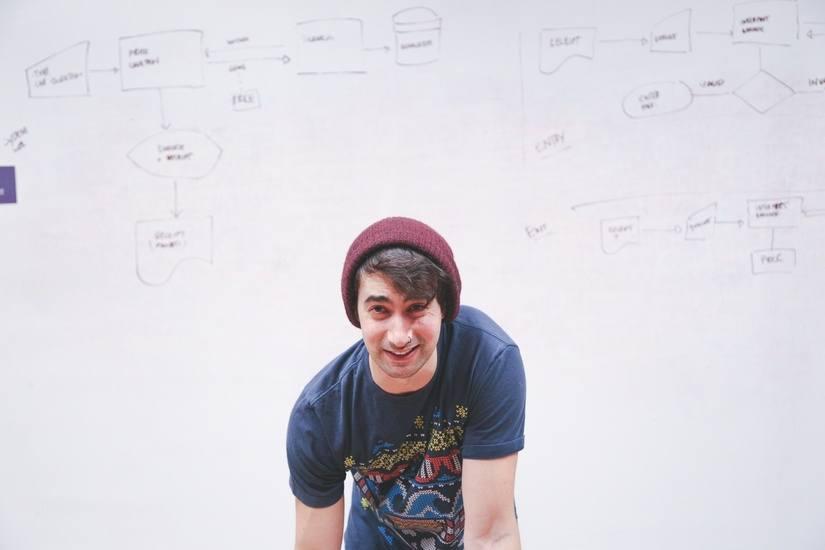

By Solène Pignet
With 2015 soon drawing to a close, many impact entrepreneurs and fellow changemakers are looking back to check what has been achieved, and what’s missing.
- Did you achieve everything you hoped to this year?
- Do you know what can you do to make even more progress toward your mission next year?
You have two options: wait and see what 'happens' ... or take action and plan to make it happen! Here are five reasons why you should go for the second option.
1. Impact happens on purpose
I am sure you experience this every single week of your entrepreneurial journey: Nothing happens unless you work on it to happen.
Of course, there is a part of chance and unexpected partnerships spicing things up, but the truth is: What you do and how you communicate about it is what is attracting those opportunities to you.
Getting clear on what kind of impact you want to create, and what you need for that to happen (even if not everything is in your hands), is key. It makes it much easier to attract the right opportunities and focus on the actions that will lead you to where you want to go.
2. Planning is not only reserved for launch
Look back and remember how much you used to plan before launching your social enterprise. Okay, maybe you even planned too much -- as it was a good excuse to procrastinate on actually getting started. Maybe at the time you had difficulties to forecast what would actually happen, and your “plan” became obsolete quite rapidly … but you did make a plan, didn’t you?!
Defining a vision, setting goals and identifying key actions are part of the entrepreneur’s job -- and not only before launching! Now that you have already (some) experience, you can use all those new information to make an even more effective plan!
3. Planning allows you to take a step back from your daily challenges
As an impact entrepreneur, it is easy to get caught into the daily multitasking and problem-solving. It's so easy that we all tend to procrastinate on important yet not-that-urgent things.
Taking a time to work on your business is as important as the things you can do when working in your business.
The end of the year is a good excuse to take this necessary step back.
4. Planning is not just about the future; it is also a celebration of today
When you take a step back to plan your next year, you also look back at what you already achieved -- and that is a great opportunity to celebrate!
How many times a year do you take a break from your challenges and actually look at what’s going well? Not just the big wins and amazing opportunities, but also the smaller challenges that you resolved, the tiny changes that led to a big improvements, the qualitative impact you’ve created beyond the numbers.
Yes, planning is not just “making a plan," but also an opportunity to re-boost your confidence by celebrating what has already been achieved, and set even brighter, bolder goals to move forward.
5. Planning is like using a GPS: It allows you to go the extra mile
- Who uses a GPS in his own neighborhood? Probably only my mom (sorry, mom ;) ).
- Who does not use a GPS when going to a far away, unknown place? The people who end up getting lost and waste time asking around.
If you wanna stay inside your comfort zone, and if you are happy with the impact you created so far, do just that again next year. Fine. Don’t plan, you already know what to do.
But if you want to challenge yourself, if you are the kind of person who likes to go the extra mile, push the limits and go out of his comfort zone, then go for it! Planning is what will secure your step forward.
Now, does it mean you won’t get lost? Does it mean “the lady” won’t say “turn left now” in the middle of the brand new highway? No, that is for sure still going to happen. But at least you will have maximized your chances to go as fast and as far as you can!
Image credit: no attribution, COO licence, source : pexels.com/planning
Solène is a globetrotter, committed to sustainable development and passionate about alternative entrepreneurship. She founded Creators for Good in 2014. She provides online consulting services to (aspiring) entrepreneurs willing to make a difference in the world.
She is also the co-host of The Global #SocEnt Lab, an online community accelerating collaborations between social entrepreneurs around the world.
What We Should Address About Medical Testing Technology
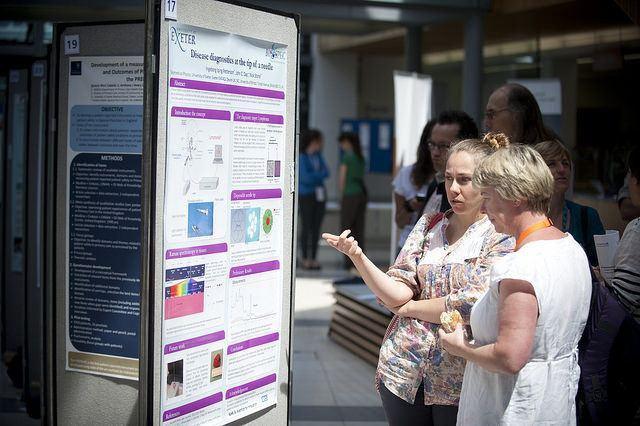

By Kayla Matthews
When 70 percent of the medical decisions in the United Sates are influenced by laboratory tests, it’s critical for those tests to be reliable. Inaccurate medical tests can be wasteful or even dangerous. Forgetting to calibrate a testing machine may seem like a minor offense, but it can lead to deadly miscalculations in how much medication a patient needs.
Unfortunately, current medical testing practices are woefully insufficient. Like any business, labs are always looking for ways to save a little time and money. But are the time and money saved worth the cost to patients’ well-being?
Simple doesn’t mean foolproof
Labs that perform only waived tests can obtain a Certificate of Waiver (COW) under the Clinical Laboratory Improvement Amendments (CLIA), exempting them from routine inspections. To be waived, tests must be simple and accurate, requiring little-to-no technical knowledge to perform.
The tests that fall under this category pose minimal risk to patients and are cleared for home use. Some well-known examples include finger pricks to measure blood glucose and cheek swabs to detect HIV.
Even waived tests are not foolproof, though. Botched paternity tests can tear families apart, and a false negative on an HIV test can leave a patient without life-sustaining treatment.
Unfortunately, many healthcare professionals are lured into a false sense of security by the simple nature of these tests. With the lack of regulation, it’s easy to make careless mistakes when administering waived tests.
Proficiency testing (PT) is a form of external quality control required for all non-waived tests, but waived tests are exempt. However, enrolling in an optional PT program is a good way for labs to improve the integrity of their waived testing procedures.
Accept no exceptions to regulation
Laboratory-developed tests (LDTs) occupy another regulatory loophole. Commercial test kits must be reviewed by the Food and Drug Administration (FDA) before hitting the market, but no such requirement exists for tests created and used within individual labs.
As technology advances, LDTs are becoming more complex and widespread. Without consistent FDA evaluation, it’s virtually impossible to ensure the accuracy and usefulness of these individually-developed tests.
Tests with poor sensitivity may leave serious conditions undetected and untreated. For example, the lab-developed SurePath Collection Medium test for Human Papillomavirus (HPV) is prone to false negatives, allowing the virus to advance into full-blown cervical cancer without early detection.
Other LDTs are prone to false positives, indicating a condition that isn’t actually present. This is common in ovarian cancer screenings, leading to the invasive and pricey removal of perfectly healthy ovaries.
In other cases, LDTs are irrelevant or are based on bad research. These unnecessary tests can be costly to patients, society and the environment. For instance, the CARE Clinics Autism Biomarkers Test was based on disproven research. A total of 2,027 children were misdiagnosed over a four-year period, leading to an estimated $66.1 million in inappropriate services.
A two-pronged solution
Increased federal oversight of medical testing technology is an obvious solution to these quality control problems, but it’s only part of the picture. Labs can expedite the process by taking responsibility into their own hands. Here are four ways labs can demonstrate their commitment to scientific integrity and quality patient care:
- Research tests carefully: It’s essential to meticulously research tests before implementing them. This is the best way to avoid tests that are poor quality or based on obsolete research.
- Practice equipment maintenance: Equipment repairs and calibration are a vital part of running a lab. Worn-down equipment can significantly impact test results.
- Train staff thoroughly: When training staff, emphasize the importance of following procedures. Be explicit about why each step is important, and provide clear and frequent feedback so mistakes can be corrected early.
- Harvest outside feedback: Enrolling in proficiency testing or other external quality control programs helps ensure no corners are being cut.
We’re a long way from perfecting the art of medical testing, but increased federal regulation and a commitment to quality from individual labs are definite steps in the right direction.
Image by University of Exeter